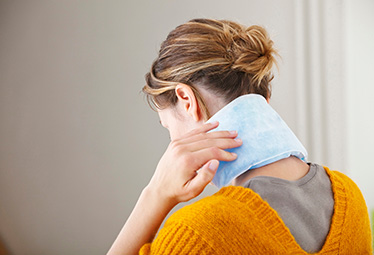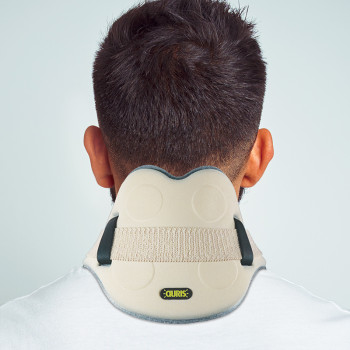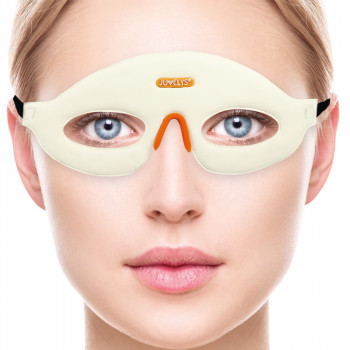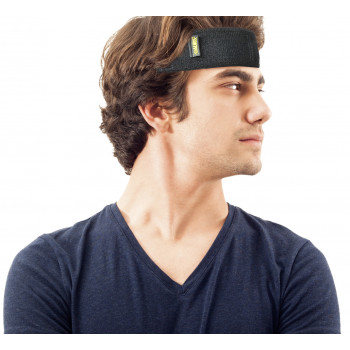 A little-known but common condition, often confused with migraine.
A little-known but common condition, often confused with migraine.
The pain starts at the base of the skull, travels up the head and stops behind the eye. Sometimes unilateral, sometimes pulsating, it is accompanied by stiffness in the neck, discomfort when turning the head, and even a feeling of constant tension. These symptoms often resemble those of migraine. However, in many cases, it is Arnold's neuralgia, also known as occipital neuralgia.
Less well known to the general public, this condition affects many people and is still too often misdiagnosed. Fortunately, there are simple, natural solutions to relieve pain and improve daily comfort.
A characteristic pain: from the neck to the eye
Arnold's neuralgia is an irritation or inflammation of the greater occipital nerve, also known as Arnold's nerve. This nerve, located on either side of the cervical spine, emerges from the upper vertebrae (C2) and innervates a large area from the base of the skull to the upper part of the scalp, passing behind the ear.
When compressed or inflamed, this nerve can cause a very specific type of pain:
- It often starts in the nape of the neck, in a deep, sensitive spot.
- It travels up behind the ear, sometimes to the top of the skull.
- It can radiate to the eye, giving the impression of a migraine or eye pain.
Some patients describe a burning, tingling or electric shock sensation. Others describe a constant, dull pain, with more acute peaks at the end of the day or after prolonged sitting.
What causes this neuralgia? The most common causes
Several factors can explain irritation of the Arnold nerve. The three most common causes are as follows:
Cervical osteoarthritis is often the cause, especially in people who already suffer from stiffness or pain in the neck. Ageing intervertebral discs, bone spurs, or joint deformities can compress the nerve as it exits the vertebrae.
Poor posture, particularly when sitting for long periods of time, is a common trigger. Keeping your head bent forward, such as when reading on a tablet or using a smartphone, puts excessive strain on the cervical muscles. This tension can irritate the tissues surrounding the nerve, causing local inflammation.
Stress also plays an important role. In cases of chronic stress, the neck and shoulder muscles tend to contract involuntarily. This repeated tension can aggravate neck pain and sensitise the Arnold nerve.
Trauma, a herniated cervical disc, or localised muscle tension may also be responsible. Sometimes, no specific cause can be identified, but the pain is very real.
Migraine or Arnold's neuralgia? A common confusion
It is not uncommon for Arnold's neuralgia to be confused with migraine. The two types of pain do indeed share certain characteristics: they are unilateral, pulsating and radiate towards the eye.
However, there are a few ways to tell them apart:
- Arnold's neuralgia is usually triggered by head movement, neck massage, or pressure at the base of the skull.
- Unlike migraine, it does not always cause nausea, visual disturbances or sensitivity to light.
- It can worsen after sitting for long periods or due to poor sleeping posture.
It is therefore important to obtain an accurate diagnosis, preferably from a general practitioner, rheumatologist or neurologist. A simple clinical examination can often identify neuralgia by palpating key areas. In some cases, imaging tests may be requested to rule out other causes.
Relieving pain on a daily basis: simple steps and natural solutions
Once diagnosed, the treatment of Arnold's neuralgia is primarily based on conservative methods. Several non-medicinal approaches can be implemented at home to relieve pain and relax the neck.
Heat is a valuable ally. It helps to relax the muscles contracted around the nerve and soothe inflammation. Applying a heating pad, hot water bottle or warm towel to the neck for 15 to 20 minutes can provide quick relief, especially at the end of the day.
Self-massage is also very effective when practised regularly. You can gently massage the base of the skull with your fingers, using small circles, or smooth the neck muscles towards the shoulders. Some people prefer to use a massage ball against a wall or a small, low-intensity electric massage device.
Here are some useful techniques to incorporate into your routine:
- Slowly stretch your neck several times a day, tilting your head to one side and then the other.
- Regularly adjust your posture in front of the computer or at the table, keeping your head aligned with your body.
- Sleep with an ergonomic pillow that supports your neck well, without being too high.
Cervical magnetotherapy: a gentle approach to soothing inflammation
In addition to local treatments, magnetotherapy can be a natural and effective solution for relieving pain associated with Arnold's neuralgia. This method is based on the use of magnetic fields, applied statically or in pulses to the painful area.
Magnets placed on the cervical spine have several effects:
- They stimulate local circulation, which promotes tissue oxygenation and reduces muscle tension.
- They have a calming effect on the nervous system, reducing the perception of pain.
- They contribute to deep muscle relaxation, particularly if the pain is aggravated by stress or prolonged tension.
Magnetic therapy applied to the cervical spine can be used in the form of magnetic pillows, special belts or flexible patches (Cerviflex).
Regain comfort and prevent recurrence
Arnold's neuralgia, although painful, can be effectively relieved in most cases through a combination of simple treatments and appropriate daily measures. The important thing is not to let the pain set in, and to take action at the first signs.
By re-educating your posture, allowing yourself time to rest, and using heat, massage or magnetotherapy, it is possible to break the pain-tension-pain cycle and regain lasting comfort.
Finally, if the pain persists or intensifies, do not hesitate to consult a doctor to adjust your treatment or explore other causes. Taking care of your neck also means taking care of your overall nervous and muscular balance. It is a simple but essential step towards a more peaceful everyday life.



